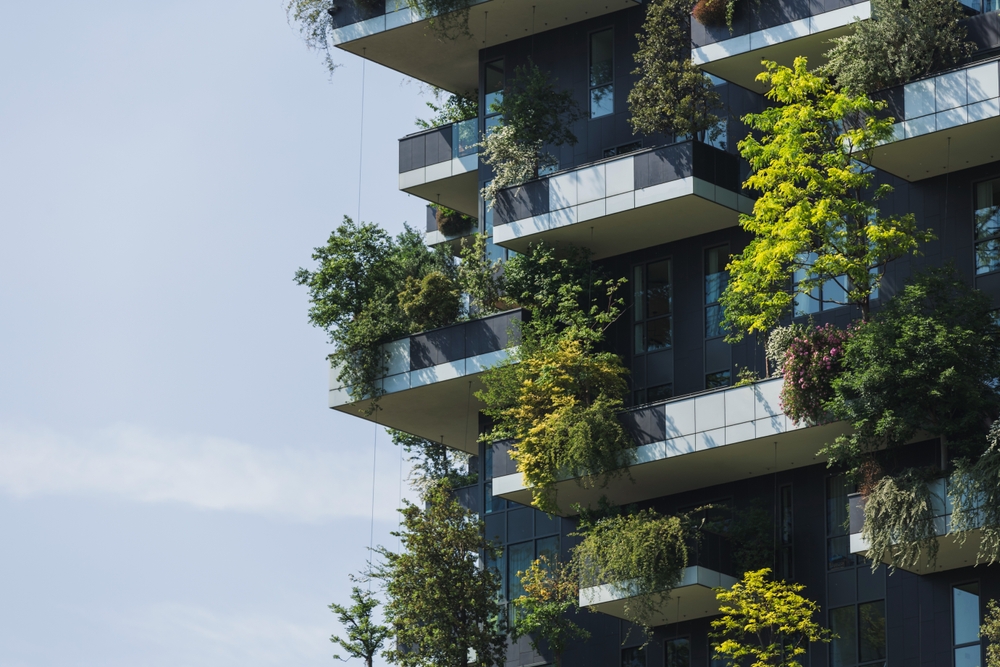Reimagining Cityscapes: The Rise of Vertical Forests in Urban Real Estate
In the ever-evolving world of real estate, a groundbreaking trend is taking root—quite literally. Vertical forests, an innovative fusion of architecture and nature, are reshaping urban skylines and redefining sustainable living. This concept, blending high-rise structures with lush greenery, is not just an aesthetic marvel but a potential game-changer in urban development and property valuation. As cities grapple with environmental challenges, these green towers offer a glimpse into the future of eco-conscious urban living.

These structures are more than just buildings with plants; they’re designed as living ecosystems. Each vertical forest is carefully planned to support a diverse range of flora and fauna, creating a microclimate that benefits both residents and the surrounding urban environment. The plants are selected based on their ability to thrive in high-altitude conditions and their capacity to filter pollutants and produce oxygen.
Impact on Real Estate Valuation
The integration of vertical forests into urban real estate has significant implications for property valuation. Early indicators suggest that these green towers command premium prices in the market. For instance, apartments in Milan’s Bosco Verticale have seen their value increase by up to 5% compared to similar properties in the area. This price premium is attributed to several factors:
-
Improved air quality and reduced noise pollution
-
Enhanced aesthetics and unique living experience
-
Lower energy costs due to natural insulation
-
Prestige associated with cutting-edge sustainable design
Moreover, vertical forests contribute to the overall greening of urban areas, potentially increasing property values in the surrounding neighborhoods. This ripple effect could lead to broader urban regeneration and increased investment in sustainable infrastructure.
Challenges and Considerations for Developers
While the concept of vertical forests is compelling, it presents unique challenges for developers and property managers. The initial construction costs are significantly higher than traditional high-rises due to the need for specialized engineering to support the weight of soil and vegetation. Ongoing maintenance is also more complex and expensive, requiring skilled horticulturists and specialized equipment.
Developers must carefully consider the long-term viability of these projects. Factors such as climate suitability, plant selection, and irrigation systems are crucial for the success of vertical forests. Additionally, there’s a need for new expertise in the real estate sector, blending architectural knowledge with botanical and environmental science.
Despite these challenges, many developers see vertical forests as a worthwhile investment. The unique selling proposition and potential for long-term value appreciation make them attractive prospects in competitive urban markets.
Regulatory Landscape and Incentives
As vertical forests gain traction, cities worldwide are adapting their regulatory frameworks to accommodate and encourage these innovative structures. Some municipalities are offering incentives such as tax breaks, expedited permitting processes, or density bonuses for developers incorporating substantial green elements into their projects.
For instance, Singapore’s Landscaping for Urban Spaces and High-Rises (LUSH) program provides incentives for developers to integrate greenery into their buildings. Such policies are crucial in offsetting the higher initial costs associated with vertical forest construction and encouraging wider adoption of the concept.
Real estate investors and developers should stay abreast of these evolving regulations and incentives. As cities increasingly prioritize sustainability and green infrastructure, properties that align with these goals may benefit from favorable policies and increased demand.
Market Outlook and Future Trends
The market for vertical forests is still in its infancy, but early indicators suggest significant growth potential. According to recent industry reports, the global green building market, which includes vertical forests, is expected to grow at a CAGR of 14.3% from 2020 to 2027. This growth is driven by increasing environmental awareness, stringent building regulations, and a shift towards sustainable urban living.
As technology advances and more data becomes available on the performance of existing vertical forests, we can expect to see refinements in design and construction methods. This could lead to more cost-effective implementation, making vertical forests accessible to a broader range of developments and markets.
Furthermore, the concept is evolving beyond residential towers. We’re seeing plans for vertical forest offices, hotels, and even entire “forest cities.” This diversification could open new avenues for real estate investment and development.
A Green Revolution in Urban Real Estate
Vertical forests represent a bold step towards reconciling urban development with environmental sustainability. For real estate professionals, these green towers offer exciting opportunities to differentiate in the market and tap into growing demand for sustainable living spaces. While challenges remain, the potential benefits—both environmental and economic—make vertical forests a trend worth watching closely.
As we look to the future of urban real estate, it’s clear that the integration of nature into our built environment will play an increasingly important role. Vertical forests are not just buildings; they’re living symbols of a new approach to urban living—one that prioritizes harmony between human habitation and natural ecosystems. For investors, developers, and city planners alike, understanding and embracing this green revolution could be key to success in the evolving landscape of urban real estate.





